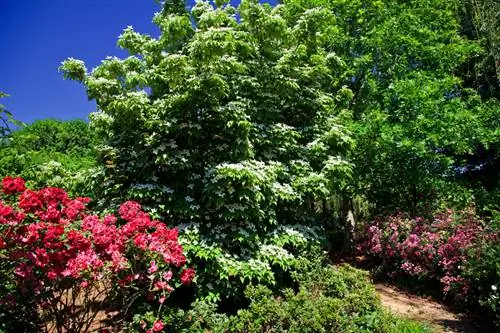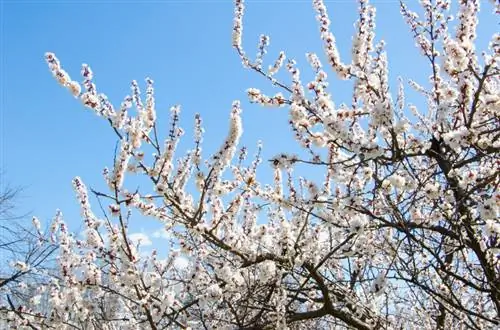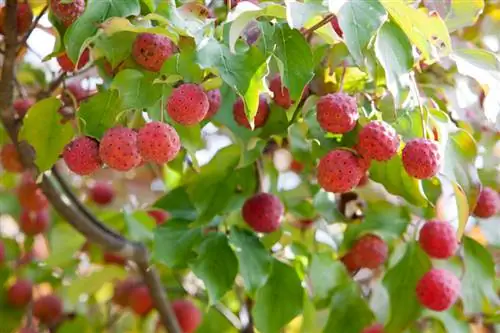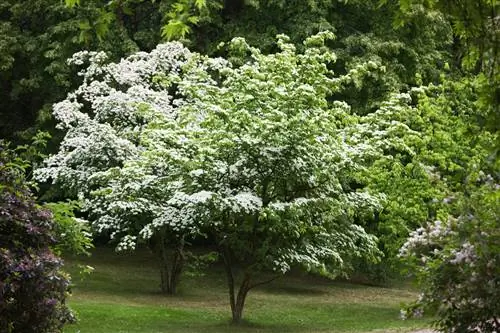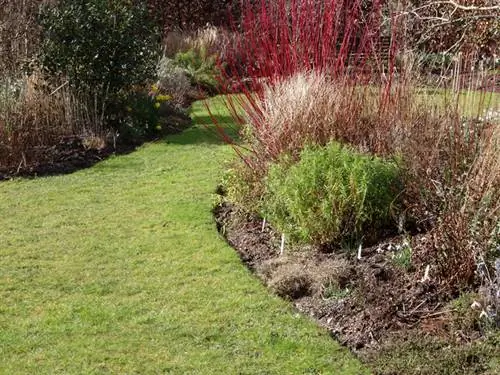- Author admin [email protected].
- Public 2023-12-16 16:46.
- Last modified 2025-06-01 06:02.
Cornus Kousa, the Japanese flower dogwood, is a short-stemmed shrub growing up to six meters high with large leaves and striking, orchid-like flowers. The flowering shrub is often planted as a solitary plant, especially due to its size and scope, but also harmonizes very well with other flowering trees. However, experts advise against regular pruning.
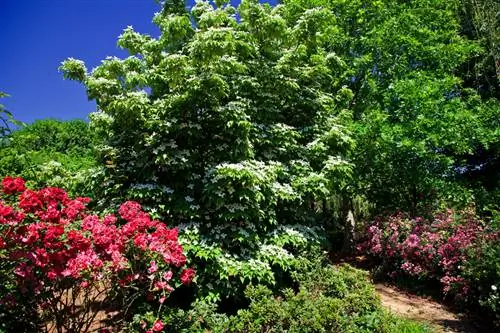
How do I cut the Japanese dogwood correctly?
For the Japanese dogwood, you should remove frozen parts of the plant in spring and thin out the shrub if necessary by removing shoots growing inwards. Radical pruning is not recommended. The ideal time to prune is immediately after flowering, around the end of June/beginning of July.
Lighting out is completely sufficient
Cornus Kousa should be cut as little as possible. Basically, it is enough to remove frozen parts of the plant in early spring and thin out the bush if necessary. In particular, shoots that grow inwards and that are too dense should be cut away so that the tree receives sufficient light and air. Plant parts that grow too densely - and therefore are too dark - develop significantly fewer flowers. The best time for this topiary is immediately after flowering, which should be around the end of June / beginning of July. Since the Japanese dogwood is quite susceptible to some fungal infections, you should make sure to use sharp and, above all, disinfected tools when cutting (€6.00 on Amazon).
Pruning is definitely possible if specimens are too large
Especially if the Japanese dogwood is planted as part of a group of trees or cultivated in a container, the shrub can quickly become too large and sprawling. In this case, either just planting out or moving the plant or cutting it back accordingly will help. This should also be done after flowering, but it should not be too drastic. More radical cuts lead to irreparable damage.
Cutting measures in case of illness and damage
Although the distinctive Japanese dogwood is considered a fairly robust plant, fungal infections or damage caused by excessive dryness or wetness still occur - especially as a result of incorrect care or an unsuitable location. In the event of a fungal infection, all affected shoots should be cut away down to the he althy wood, although you should under no circumstances dispose of the cuttings in the compost. Drought damage is often manifested by yellowing, drying shoots and leaves, which the shrub simply sheds after a while. Pruning is unnecessary here because the tree either sprouts again on its own or has died - and can therefore no longer be saved.
Tip
The Japanese dogwood can be propagated very well via cuttings. For this purpose, cut off non-flowering shoots about 15 centimeters long in late spring / early summer and plant them in a growing substrate.

